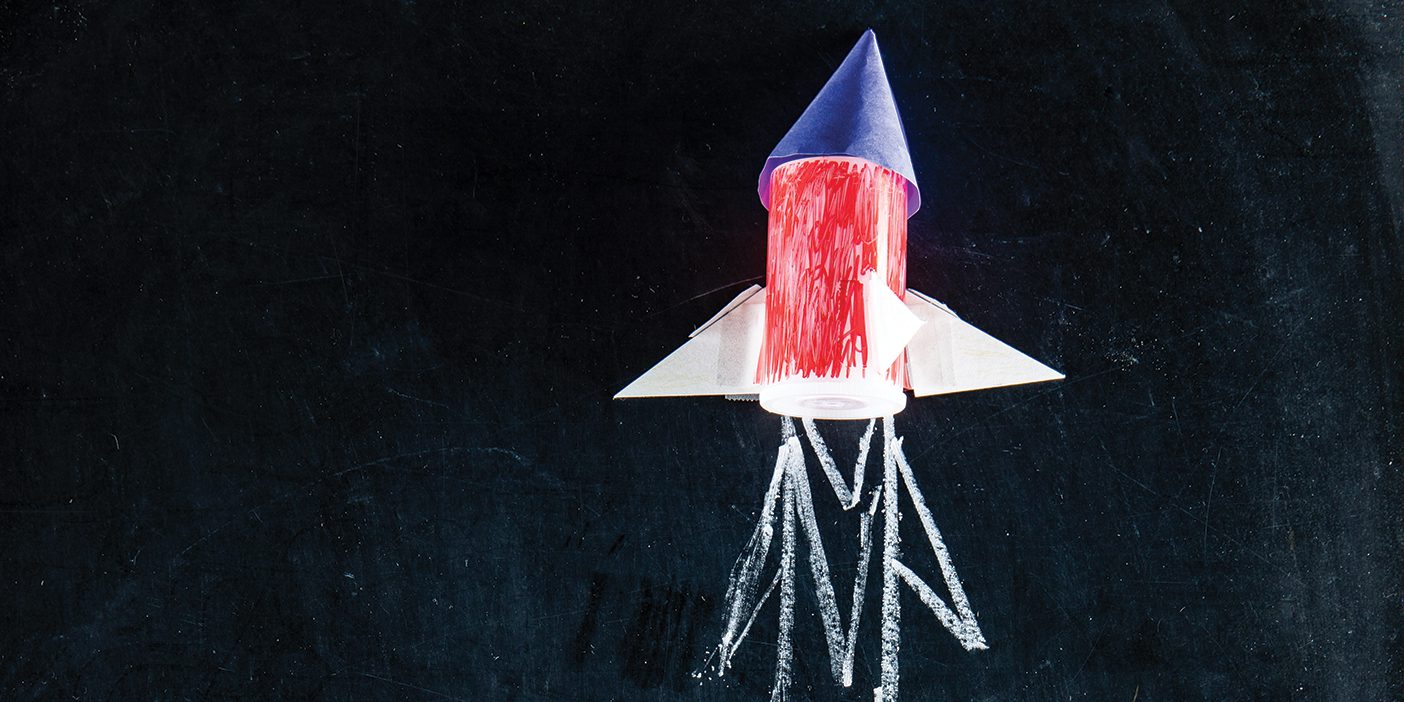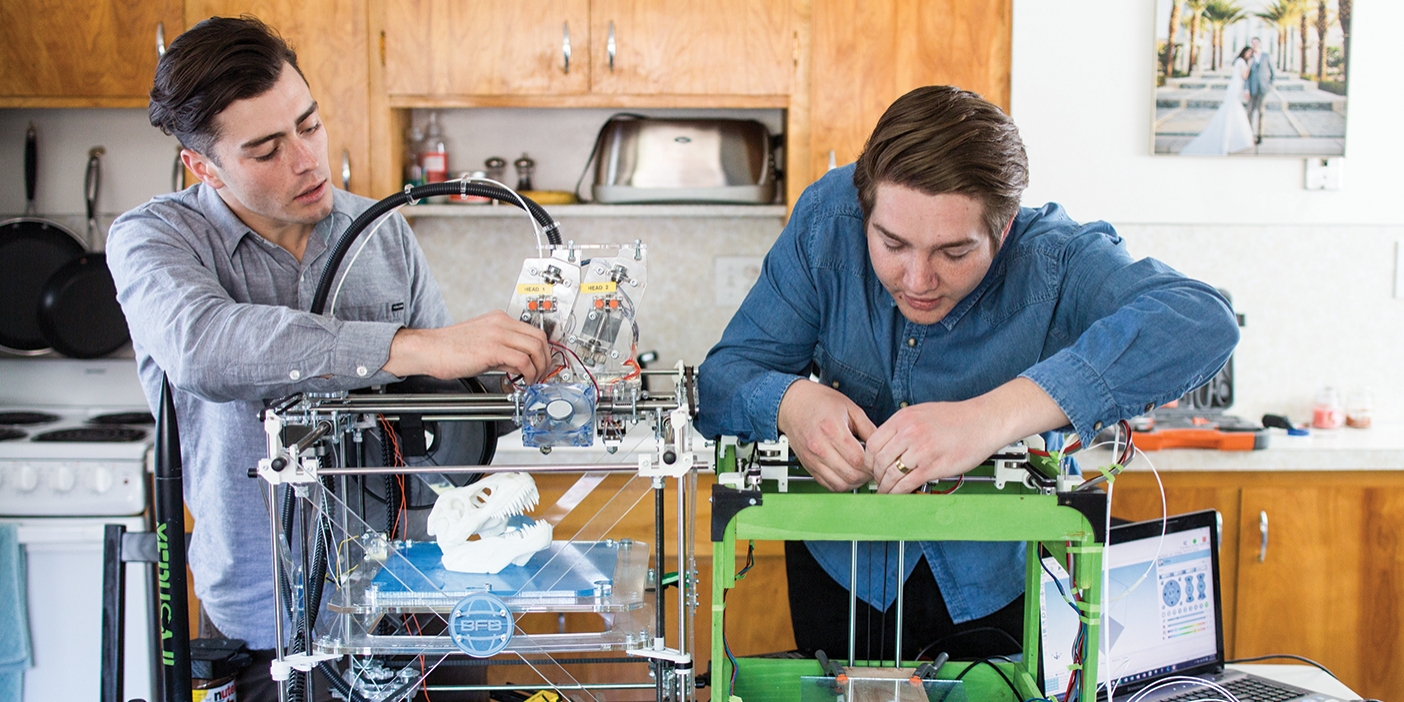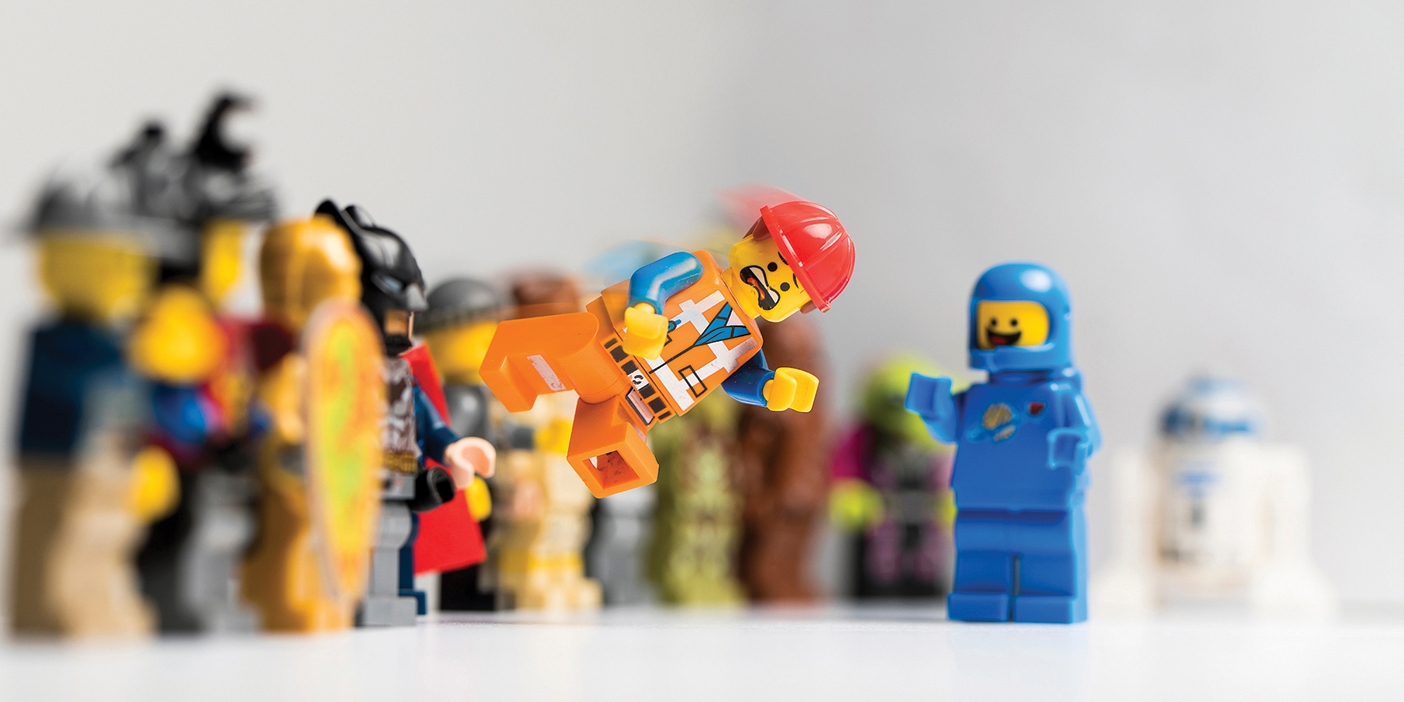
In December the BYU Rocketry Club claimed a Guinness World Record, one that’s nearly as hard to say as it was to win.
“The highest launch of an effervescent tablet rocket,” says the club’s president Mark Y. Johnson (’20), carefully enunciating each word. Basically, the team holds the record for the highest-flying rocket powered by only water and Alka-Seltzer tablets. At the Bayer Alka-Rocket Competition, Johnson and team members Zachary D. Lawless (’20), Alex R. Laraway (’20), and Riley K. Meik (’20) designed a craft that soared to 883 feet—more than double the record set the previous year—over Florida’s Kennedy Space Center. That’s nearly 63 stories, or almost three Statues of Liberty stacked.
The BYU Rocketry Club usually builds high-altitude rockets powered by more-traditional fuel, but the competition’s $30,000 prize was too good to resist, says Lawless: “We just saw it and thought, ‘Hey, we’re rocketeers. We can do it.’”
The club plans to use their winnings on their next projects, like getting a rocket to 10,000 feet (714 stories, or 33 Statues of Liberty). That one, Lawless and Johnson assure, will not be powered by Alka-Seltzer tablets.
Make Your Own Rocket
It may involve rocket science, but Johnson says anyone can make an Alka-Seltzer rocket at home. You’ll need Alka-Seltzer tablets, water, an empty 35-mm film canister, index cards, and tape.
1. Start with the “dart,” the part fired into the air. BYU Rocketry made a 1-foot plastic tube for theirs, attaching a 3-D-printed container that held the flight computer to collect altitude data. For your rocket, the dart will be the plastic film canister.
2. Attach the fins. Cut three triangular fins out of your index cards and tape them to your container. When you launch, the lid side will point downward, so attach your fins accordingly. You can also tape a paper nose cone to the canister, but the weight may affect your rocket’s altitude, say the students.
3. Prepare the fuel. BYU Rocketry used 100 Alka-Seltzer tablets. For your launch, start with one or two.
4. Flip the rocket upside down and fill the canister one-third full of water.
5. Three, two, one . . . Drop the tablets into the canister and quickly seal the lid; then place the rocket lid-side- down on the ground and step back.
6. Let it fly! The reaction may not be immediate; BYU Rocketry’s launch reaction took 15 minutes to build up enough pressure. And remember, “don’t blow yourself up,” says Lawless. “It’s, like, the No. 1 rule of rocketry.”












